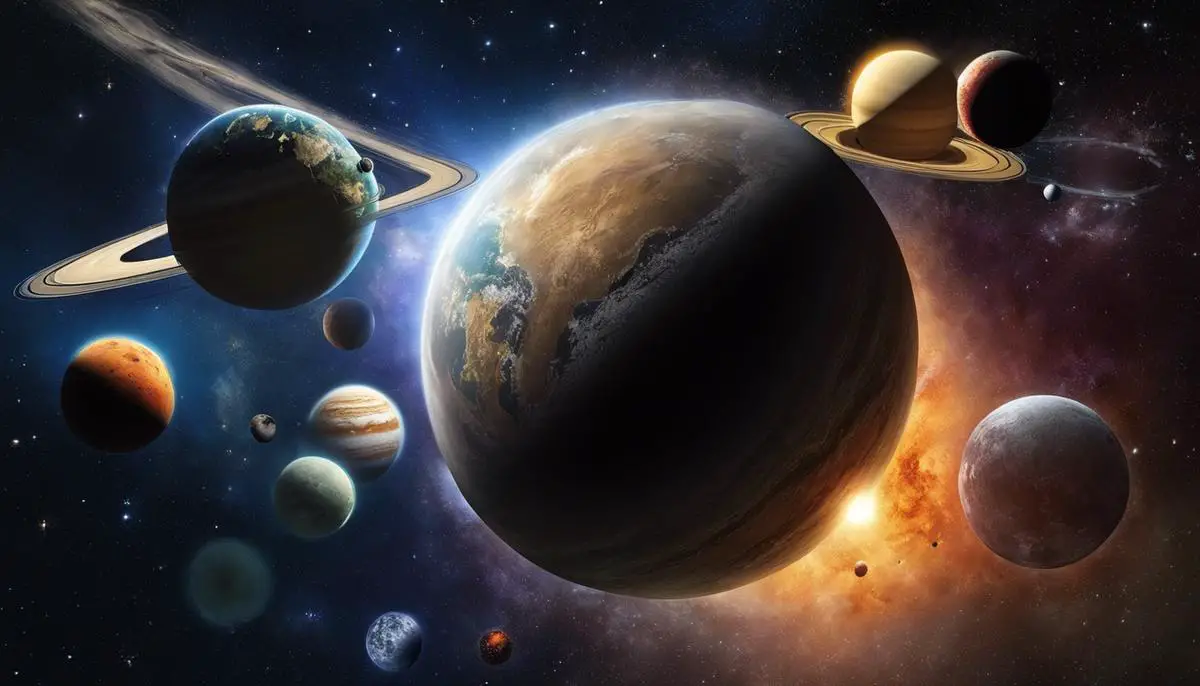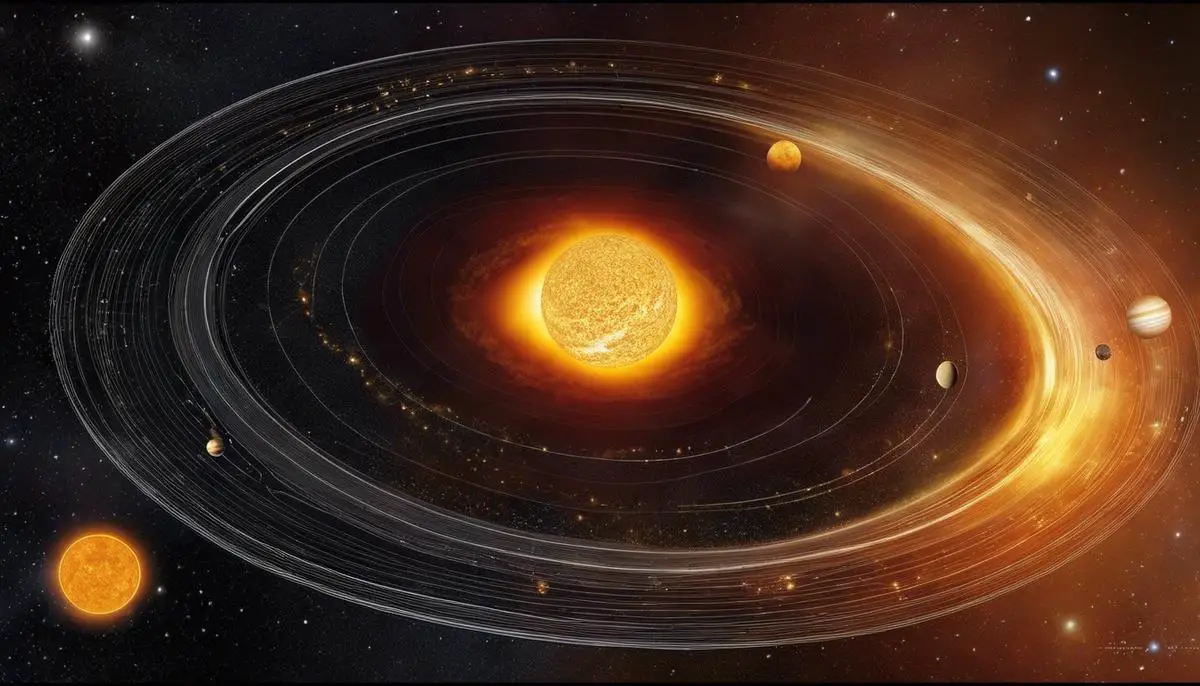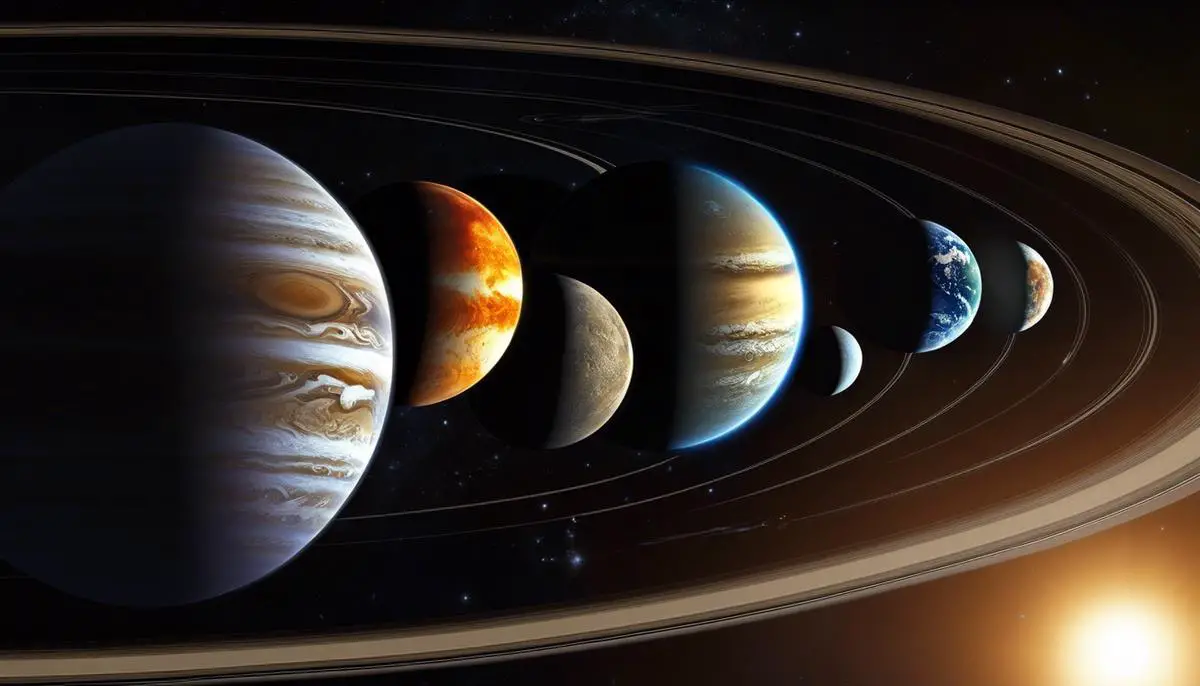Embarking on an interstellar journey through the vast expanse of our solar system invites us to explore an array of planetary bodies that are as diverse as they are distant. At the heart of this cosmic dance is the Sun, a fiery sphere of energy that anchors and animates the eight unique planets and their moons in their ceaseless orbit. As we delve into the terrains of terrestrial and gas giant planets, we uncover the rich tapestry of characteristics that make each celestial body distinct, from Mercury’s swift dash around the Sun to the icy rings of Saturn. The exploration of our solar neighborhood is not just a voyage through space, but also a journey through the wonders of our solar system’s varied composition and the phenomena that make life on our own planet possible.
Planetary Bodies of the Solar System
The Assembly of Major Celestial Entities in Our Solar System
The solar system is a profound conglomeration of various celestial bodies, each playing a pivotal role in the cosmic ballet that unfolds across the vast expanse of space. Among the most significant constituents of the solar system are the eight planets, each unique in its properties and orbits. These planets are categorized into two distinct groups: the terrestrial planets, comprising Mercury, Venus, Earth, and Mars, which boast solid, rocky surfaces; and the gas giants, comprising Jupiter and Saturn, alongside the ice giants Uranus and Neptune, which are characterized by their colossal gaseous compositions and more complex ring systems.
A discerning consideration of planetary bodies must also include the dwarf planets, such as Pluto, Ceres, and Eris, which, while meeting many criteria of planets, lack the gravitational dominance to clear their orbits of other debris. The solar system’s architecture extends beyond planets and dwarf planets, encompassing an intricate structure of moons, comets, and asteroids. These secondary bodies, orbiting the primary planets or the Sun itself, contribute further to the dynamic system and offer invaluable insights into our cosmic neighborhood’s evolutionary narrative.
The understanding of our solar system’s major planetary bodies is not merely an academic exercise but vitally enriches our perception of the universe and humanity’s place within it. Each discovery, from the resplendent rings of Saturn to the far-flung ice mountains on Pluto, extends the frontier of human knowledge and underscores the intrinsic desire to explore our celestial surroundings. Observational advancements and theoretical developments continue to deepen our comprehension, ensuring the solar system remains an enduring focal point of astronomical research and wonder.

Understanding the Sun: The Solar System’s Powerhouse
The Sun, our resident star, is the unequivocal linchpin holding the solar system together. It exerts a monumental gravitational force, keeping the planets in their respective orbits. The gravitational pull it extends across the vastness of space ensures that each celestial body, from the mightiest gas giant to the tiniest asteroid, traces a path dictated by its mass and velocity relative to the star. This harmony of movement is an observable certainty, demonstrated by the regularity of planetary transits and the predictable appearance of comets.
Beyond its gravitational command, the Sun is also the central source of energy for the solar system. It radiates vast amounts of light and heat, which are crucial for conditions on Earth and influence the atmospheric dynamics on other planets. This solar energy is responsible for driving climatic and weather patterns on Earth, stirring the atmospheres of gas giants into tempestuous displays and affecting the surfaces of airless bodies through solar wind and radiation. The photo-chemical reactions that power life on our planet stem from this energy, as do the less noticeable but equally compelling processes occurring on other planets and their satellites.
Moreover, the Sun contributes to the solar system’s plasma environment, ejecting streams of charged particles known as the solar wind. This wind interacts with planetary magnetospheres, shaping them and, on occasion, contributing to phenomena such as the northern and southern lights – the aurorae that festoon the Magnetic Poles with spectral colors. From sustaining life to invoking natural spectacles, the Sun’s role in fueling the dynamics of the solar system is as multifaceted as it is majestic. Thus, continued solar observations and research remain critical to expanding the understanding of the underlying principles that govern our celestial neighborhood.

Our venture into the solar system is more than a collection of facts about distant worlds; it is a profound reminder of the intricate and harmonious system in which we live. Through understanding the majestic power of the Sun and the diverse characteristics of the planets and their moons, we gain insight into the delicate balance that enables life to flourish on Earth. The subtle dance of gravitational pulls, the shielding embrace of magnetic fields, and the cascading energy of solar wind together weave a story of cosmic interdependence. As earthly witnesses to this celestial spectacle, we not only expand our knowledge but also deepen our appreciation for the dynamic system we call home.
![]()
